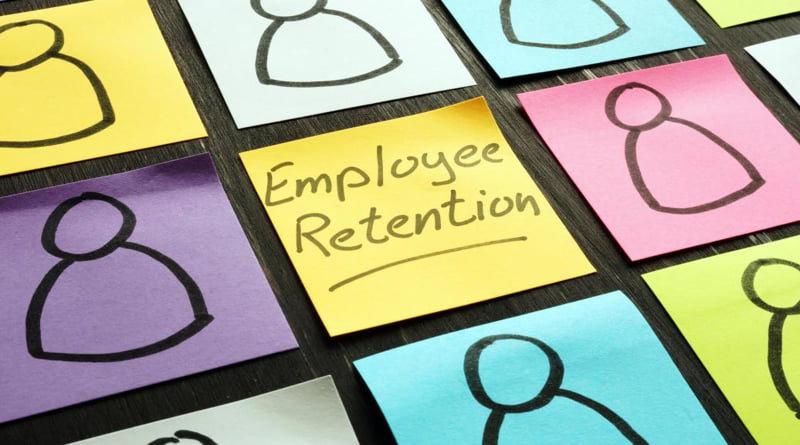How to Retain Employees During Changing Workplace Requirements
In today’s rapidly changing business environment, it’s more important than ever, for companies to retain their top performing, efficient & result oriented employees. With unemployment rates at historic highs, availability of passive earning platforms & rise of freelance economy; competition for top talent is fierce, and the cost of replacing an employee can be significant.
Many modern day employers believe they are not getting as much loyalty from modern day workforce, as they used to get from previous generations. This raises more questions than straight resolution; do modern employers providing compatible, sensitive & responsive work environment? or are there more earning opportunities than ever before? or priorities are getting change for Generation Z, or job environment becoming more toxic now? As a simple solution mechanism, first we have to identify the problem, then have to build our solution based strategies for modern day workforce.
How Big is the Employee’s Turnover Cost for Employers?
The cost of employee turnover can vary depending on the industry and the specific role, but it can be substantial for employers. According to a study by the Society for Human Resource Management (SHRM), it can cost an organization up to six to nine months’ salary to replace a good employee. According to the Center for American Progress, the average cost to replace a worker earning an annual salary of $40,000 is around $8,000. This includes costs such as recruiting, hiring, and training expenses. For highly-skilled positions or executive roles, the cost can be much higher. A study by the Society for Human Resource Management found that the median cost of replacing an employee is around 21% of that employee’s annual salary. Additionally, according to an article by Forbes, the cost of losing a high performing employee can be as much as 213% of their annual salary.
Here are some strategies, best practices & tips that organizations/ employers can use to retain employees during these ever changing & tough economic times:
Corroborate Organizational Goals with Generational Needs
First we have to realize and admit that, modern day generation or popularly known as gen-z, is different in many ways from their predecessors & that’s why their priorities, needs & requirements are different there too. Generation Z, also known as iGen or Centennials, includes individuals born between 1997 and 2012. Now like previous generations, they don’t just want salaries & material benefits alone; now they want more inclusive, collaborative, diverse, growth oriented, equity based open work environment. Modern businesses to be vigilant & responsive to generational needs, if they want to keep their modern work force intact for long.
Here are some factual findings on iGen job Priorities in 2023:
- In terms of job requirements, a survey by Deloitte found that members of Generation Z place a high importance on work-life balance, with 84% saying that it is important to them. Additionally, 72% of Gen Z respondents said that they are more likely to stay with a company for a longer period of time if the company offers a good work-life balance.
- Another important factor for Generation Z is the ability to make a positive impact on society. A study by Accenture found that 61% of Gen Z respondents said that they would take a pay cut to work for a company that is making a positive impact on the world.
Overall, Generation Z values a balance between work and personal life, the ability to make a positive impact on society and opportunities for professional development and career growth.
Offer Flexible Work Arrangements
A study by the National Bureau of Economic Research found that employees who have the option to work flexible hours are more likely to report higher job satisfaction and are less likely to quit their job. With the rise of remote work and the ongoing COVID variances, many companies are having to adapt to new ways of working. One of the key ways to retain employees is to be responsive to changing workplace requirements. In a survey by SHRM, 80% of employees said that they would prefer to work from home at least part of the time. By offering flexible work arrangements such as remote work or flexible hours, companies can attract and retain top talent.
With tightening economic conditions & high inflations world wide, mostly people are preferring multiple job opportunities for passive or supplementary support. A 2022 survey by FlexJobs found that 80% of employees who have flexible work options feel less stressed, while 78% reported feeling more productive.
Provide Training and Development Opportunities
According to a report by the Association for Talent Development (ATD), companies with a strong commitment to training have, on average, 24% higher profit margins than those without such a commitment. Modern day workforce look for opportunities to learn and grow, with a study by Gallup finding that 90% of Gen Z respondents said that professional development and career growth opportunities are important to them in a job. In another survey by the Association for Talent Development (ATD), 92% of employees said that professional development was important to them.
By offering training and development opportunities, companies can help employees stay up-to-date with the latest skills and technologies. A survey by the Chartered Institute of Personnel and Development (CIPD) found that in the UK, 92% of employers believe that training and development activities have a positive impact on employee motivation and morale.
Communicate Effectively
A study by the Harvard Business Review found that communication is a key factor in the success of sustainable teams, with clear and frequent communication being crucial for building trust and cooperation. In a survey by Gallup, only 25% of employees felt that their manager communicated effectively. By communicating regularly and transparently with employees, companies can help build trust and engagement.
A study by the University of Southern California found that organizations with effective communication practices have lower employee turnover and absenteeism rates, as well as higher levels of employee engagement and satisfaction.
Show Appreciation
Appreciation is actually a part of interactive communication process. Appreciation is itself a communication from employer for recognition of employee’s efforts & hard work. In a survey by SHRM, 89% of employees said that recognition was important to them. By showing appreciation, open & transparent recognition program for employees’ hard work; companies can help build a positive culture and retain top talent.
A survey by the professional services company Deloitte found that employees who feel valued and appreciated are more likely to be willing to go above and beyond in their work. The survey found that 94% of employees who feel valued and appreciated in the workplace are willing to put in extra effort, compared to just 25% of employees who don’t feel appreciated.
Be Responsive to Employee Feedback
Organizational communication is not like a one way channel, rather it is becoming more interactive and both ways. In a survey by the Center for Creative Leadership (CCL), 70% of employees said that they would stay with an organization longer if their feedback was taken seriously. By being responsive to employee feedback, companies can help build engagement and retention.
In Conclusion, By implementing these strategies, companies can help retain their top employees during changing workplace requirements. While retaining employees can be challenging, it’s an essential part of building a successful organization.
Top 15 Employer Survey Questionnaire | How To Get Job You Love- Job Hunt Process & Strategies | Useful Job Hunt Sites for All Professions & Sectors




